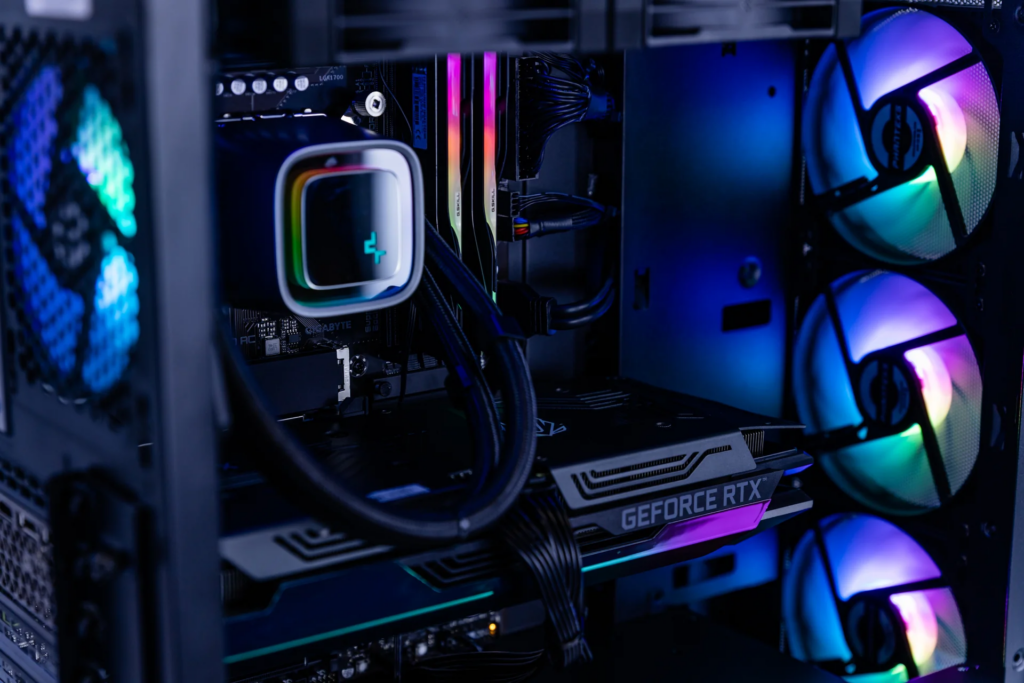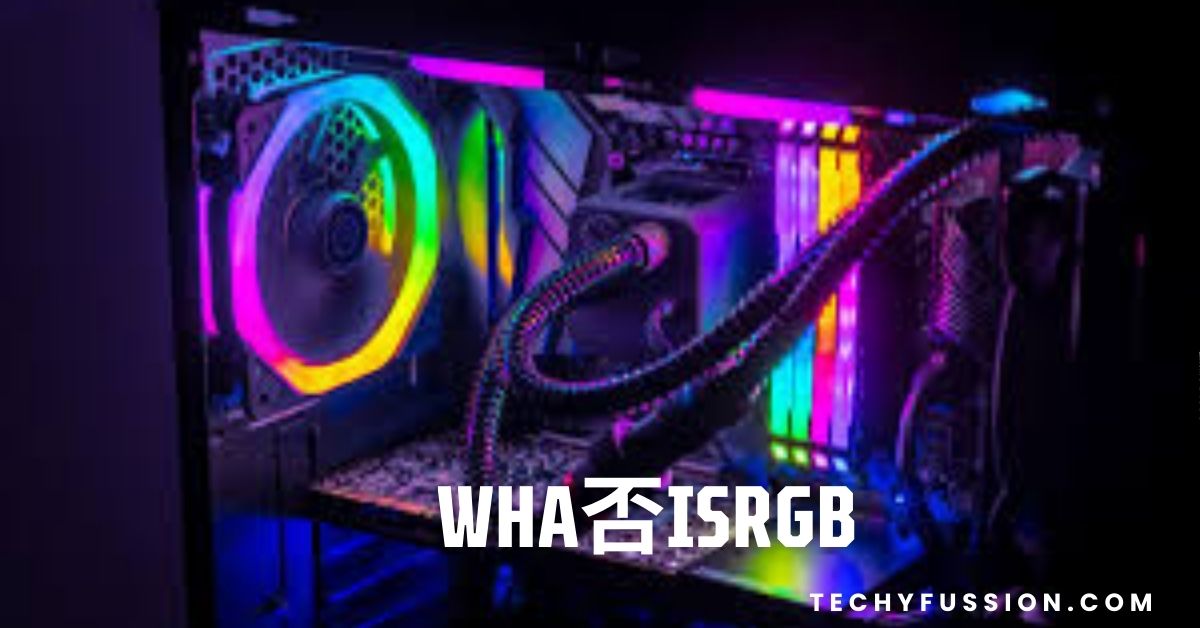wha否isrgb :Its Importance in the Digital World
In the digital age, the term “RGB” is widely recognized, yet its full significance often goes unnoticed. When we explore the phrase “wha否isrgb,” we delve into a fundamental concept of color representation that plays a vital role in our everyday digital experiences. This article aims to simplify and explain what RGB is, why it matters, and how it impacts our modern digital interactions. By the end, you’ll not only understand wha否isrgb but also its practical applications in various fields.
What Does RGB Stand For?
RGB stands for Red, Green, and Blue, the three primary colors of light. These colors form the basis of the RGB color model, which is widely used in digital devices to create vibrant and accurate color displays. Here is a deeper look at its significance:

1. The Foundation of Digital Color
RGB serves as the fundamental building block of how colors are displayed on electronic screens. By adjusting the intensity of red, green, and blue, devices can create a full spectrum of colors that mimic real-world hues.
2. Range of Color Possibilities
The RGB model can produce over 16 million unique colors by varying the intensity of each primary color from 0 to 255. This vast range makes it suitable for everything from simple graphics to complex, high-definition visuals.
3. Mathematical Representation
In technical terms, RGB values are often represented as (R, G, B). For example:
- (255, 0, 0): Bright red.
- (0, 255, 0): Bright green.
- (0, 0, 255): Bright blue.
- (0, 0, 0): Black (absence of light).
- (255, 255, 255): White (maximum intensity of all three colors).
Why Is RGB Important in Digital Technology?
RGB is not just a concept; it is an integral part of how we interact with the digital world. Let’s explore the reasons why RGB is so important:
Also Read: Familia de Gessami Martinez en Barcelona España: A Legacy of Cultural Enrichment
1. Accurate Color Representation
RGB ensures accurate and consistent color reproduction across devices. This is particularly critical in:
- Entertainment: Watching movies or playing video games with rich, lifelike visuals.
- Art and Design: Allowing creators to match colors exactly as intended.
- Advertising: Ensuring brand colors appear the same across platforms.
2. Universal Standard for Digital Devices
RGB is the standard for most digital screens, from small smartphones to massive LED billboards. This universality ensures:
- Compatibility between devices.
- Consistency in user experience.
3. Creative Freedom
The ability to mix red, green, and blue light provides endless possibilities for:
- Customizing visual effects.
- Enhancing user interfaces.
- Innovating in areas like virtual reality and augmented reality.
How Does RGB Work?
The RGB color model is based on additive color mixing, which differs from how pigments (like paints) mix. Here’s a detailed breakdown of how it functions:
1. The Additive Process
RGB combines light from three sources (red, green, and blue) to create colors. The more light added, the closer the color moves to white. The absence of all light results in black.
2. Understanding Color Channels
Each primary color operates as a separate channel, with values ranging from 0 (no intensity) to 255 (maximum intensity). These channels work together to produce the final color seen on the screen.
3. Examples of RGB Color Mixing
- Red (255, 0, 0) + Green (0, 255, 0) = Yellow (255, 255, 0).
- Red (255, 0, 0) + Blue (0, 0, 255) = Magenta (255, 0, 255).
- Green (0, 255, 0) + Blue (0, 0, 255) = Cyan (0, 255, 255).
- Combining all three at full intensity results in white (255, 255, 255).
Applications of RGB in Everyday Life
RGB impacts almost every aspect of our digital interactions. Here are some key applications:
Also Read: Qwangubc12: A Transformative Approach to Digital Innovation
1. Digital Displays
The screens of TVs, computers, and mobile phones use RGB to render images and videos. Every pixel on these screens contains tiny subpixels of red, green, and blue that adjust in brightness to create colors.
2. Photography and Videography
RGB is crucial in capturing and editing images and videos:
- Image Capture: Cameras use RGB sensors to record the intensity of red, green, and blue light, producing vibrant and detailed photos.
- Post-Processing: Editing software like Adobe Photoshop relies on RGB to allow precise color adjustments.
3. Web and Graphic Design
Designers use RGB values to craft visually appealing content for websites, apps, and advertisements. RGB ensures:
- Compatibility across devices.
- Bright, engaging visuals that attract users.
4. Gaming and Virtual Reality
RGB technology enhances the immersive experience in gaming and VR. Dynamic RGB lighting effects in gaming setups and realistic environments in VR rely on accurate color representation.
5. Smart Lighting Systems
RGB LEDs are used in smart lighting solutions, allowing users to customize lighting colors for ambiance, events, or productivity.
Challenges and Limitations of RGB
While RGB is powerful, it does have its drawbacks. Understanding these limitations is essential for using it effectively:
1. Not Suitable for Printing
RGB is designed for light-based displays, but printers use CMYK (Cyan, Magenta, Yellow, and Key/Black) because it’s better suited for pigment-based color mixing.
2. Variability Across Devices
Colors may look different on various screens due to differences in resolution, brightness, and calibration. This can create challenges in ensuring consistent color reproduction.
3. Limited Gamut
RGB cannot represent all visible colors, such as some highly saturated or subtle shades, which are outside its range.
Future Developments in RGB Technology
RGB technology continues to evolve to meet the demands of modern devices and applications. Key advancements include:
1. HDR (High Dynamic Range)
HDR expands the range of colors and brightness levels, making visuals more realistic and lifelike. This technology is now common in high-end TVs and monitors.
2. Quantum Dot Displays
Quantum dot technology enhances the accuracy and vibrancy of RGB colors, providing superior visual quality in next-generation displays.
3. Extended RGB Systems
Some systems now use extended RGB models, adding additional channels like yellow or white to increase the range and brightness of colors.
Also Read: Broan 990725078A: The Ultimate Guide to Enhancing Home Ventilation Systems
FAQs About wha否isrgb
What is the RGB color model used for?
The RGB color model is used for digital screens, photography, and design to create a wide range of colors by mixing red, green, and blue light.
Why is RGB important in design?
RGB provides designers with the flexibility to create vibrant and accurate colors that look good on digital devices.
Can RGB be used for printing?
No, RGB is not suitable for printing. Printers use the CMYK color model.
How can I calibrate my screen for accurate RGB colors?
You can use tools like a colorimeter or software settings to adjust brightness, contrast, and color balance.
What’s the difference between RGB and CMYK?
RGB is for screens and uses light, while CMYK is for printing and uses ink.
Are there alternatives to RGB?
Yes, other color models like CMYK, HSL (Hue, Saturation, Lightness), and LAB are used for specific purposes.
How does RGB relate to LED lighting?
RGB LEDs combine red, green, and blue light to produce a variety of colors, commonly used in smart lighting systems and decorative lighting.
Conclusion
In conclusion, the term wha否isrgb refers to a fundamental concept in color representation that has far-reaching implications in our digital lives. From enhancing our screen experiences to enabling creative freedom, RGB is a cornerstone of modern technology. By understanding how RGB works and its practical applications, you can better appreciate the vibrant, colorful world of digital content.
Whether you’re a casual user or a professional designer, grasping the importance of RGB will enrich your interaction with technology. So, the next time you see a stunning image on your screen, remember the magic of red, green, and blue at work.






